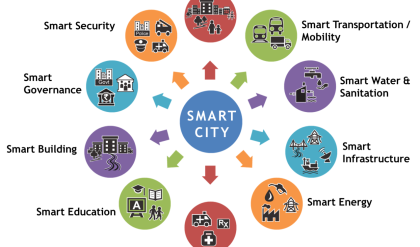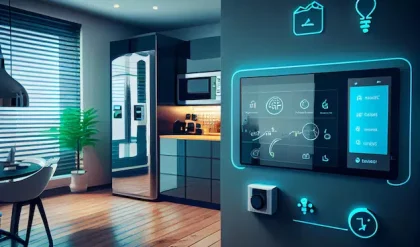
Smart Services for Seniors: Maintaining Independence & Connectivity
The silver tsunami is upon us. A global surge in the senior population presents both challenges and incredible opportunities. One key area demanding innovative solutions is maintaining the independence and connectivity of our aging loved ones. Smart services are stepping up to the plate, offering a lifeline of support that empowers seniors to live fulfilling lives in their preferred environments, whether that’s their own home or a supportive community.
Beyond the Basics: Redefining Senior Care
Traditional senior care often involves a trade-off: sacrificing independence for safety and support. Smart services, however, are rewriting this equation. They’re not just about monitoring; they’re about enhancing daily life, fostering social engagement, and providing peace of mind for both seniors and their families. Imagine a world where technology proactively anticipates needs, preventing falls before they happen, and connecting loved ones effortlessly. This is the promise of smart services for seniors.
A Tapestry of Technological Tools:
The landscape of smart services is diverse and evolving rapidly. Let’s explore some key areas:
1. Smart Home Technology:
This is the cornerstone of many smart senior care solutions. It encompasses a range of devices designed to improve safety, convenience, and accessibility:
| Device | Benefit |
|---|---|
| Smart Sensors | Fall detection, medication reminders |
| Voice Assistants | Hands-free control of appliances |
| Smart Lighting | Improved visibility, safety at night |
| Smart Locks | Remote access for family and carers |
Smart home technology isn’t just about gadgets; it’s about building an environment tailored to the specific needs of an individual. For example, a senior with mobility challenges might benefit from voice-activated lighting and automated blinds, eliminating the need for strenuous physical movements.
2. Wearable Technology:
Wearables go beyond fitness trackers. For seniors, they are invaluable tools for monitoring vital signs, detecting falls, and providing location tracking. This offers a crucial safety net, allowing for timely intervention in emergencies. Many devices also incorporate features like medication reminders and emergency call buttons.
3. Telehealth and Remote Monitoring:
Telehealth is revolutionizing healthcare access for seniors. Remote monitoring allows doctors and caregivers to track vital signs, medication adherence, and overall health remotely, reducing the need for frequent hospital visits and providing proactive health management.
4. Social Connectivity Platforms:
Combating loneliness and social isolation is paramount for senior well-being. Smart devices and platforms facilitate social interaction through video calls, messaging, and online communities, helping seniors stay connected with loved ones and maintain a sense of belonging.
5. Assistive Robotics:
While still emerging, assistive robotics holds immense potential for improving the lives of seniors. Robots can assist with tasks like medication dispensing, meal preparation, and mobility assistance, enhancing independence and reducing the burden on caregivers.
Addressing Challenges & Concerns:
The integration of smart services isn’t without its challenges. Concerns about data privacy, technological literacy, and affordability need careful consideration. Ensuring accessibility and user-friendliness is crucial for successful implementation. Educational programs and supportive services can help bridge the digital divide and empower seniors to embrace these technologies.
The Future of Senior Care: A Collaborative Approach
Smart services are not a replacement for human interaction; they’re an augmentation. The most effective solutions will integrate technology with traditional care models, fostering collaboration between families, healthcare providers, and technology developers. This collaborative approach will be essential to creating a future where seniors can age gracefully, independently, and with dignity. The future of senior care is smart, connected, and deeply human.

Additional Information
Smart Services for Seniors: A Deeper Dive into Maintaining Independence & Connectivity
The burgeoning field of smart services for seniors aims to address the critical need for maintaining independence and connectivity among an aging population. While the concept is broadly appealing, a deeper analysis reveals nuanced challenges and opportunities. This expanded discussion will explore key aspects, including technological accessibility, ethical considerations, and the potential for improved healthcare outcomes.
1. Technological Accessibility and Digital Literacy:
A core barrier to successful smart service implementation is the digital literacy gap among seniors. Many older adults lack the skills or confidence to utilize smart devices and related applications effectively. This necessitates a multi-pronged approach:
- User-friendly interface design: Smart services must prioritize intuitive interfaces, minimizing complexity and relying on visual aids rather than solely text-based instructions. Large buttons, simplified menus, and voice-activated controls are crucial.
- Comprehensive training and support: Initiatives should provide personalized training programs tailored to individual needs and technological proficiency. This could involve in-person workshops, online tutorials, and readily available technical support hotlines.
- Addressing socioeconomic disparities: Access to technology and internet connectivity varies significantly across socioeconomic groups. Initiatives must consider subsidized access programs and community-based technology centers to ensure equitable access for all seniors.
2. Ethical Considerations and Data Privacy:
The collection and use of sensitive personal data raise significant ethical concerns. Smart services often rely on data monitoring to provide personalized care, but this necessitates robust data privacy and security measures.
- Transparency and consent: Seniors must be fully informed about the type of data collected, how it will be used, and with whom it will be shared. Informed consent should be obtained explicitly and continuously, allowing seniors to withdraw their consent at any time.
- Data security and protection: Robust cybersecurity measures are paramount to prevent data breaches and misuse. Compliance with relevant data protection regulations (e.g., GDPR, HIPAA) is essential.
- Algorithmic bias: Algorithms used in smart services must be carefully designed to avoid perpetuating existing biases, ensuring fairness and equity in service delivery.
3. Impact on Healthcare Outcomes and Costs:
Smart services hold significant promise for improving healthcare outcomes and reducing healthcare costs:
- Remote patient monitoring (RPM): Wearable sensors and connected devices allow for continuous monitoring of vital signs, enabling early detection of health issues and timely interventions. A study published in the Journal of the American Medical Association (JAMA) showed that RPM significantly reduced hospital readmissions among patients with chronic conditions.
- Medication adherence: Smart pill dispensers and reminder systems can improve medication adherence, reducing adverse events and improving overall health outcomes. Studies suggest that improved adherence can lead to substantial cost savings for healthcare systems.
- Fall detection and prevention: Smart fall detection systems can alert caregivers or emergency services in case of a fall, potentially saving lives and reducing the severity of injuries. The use of such systems can significantly reduce hospitalizations and long-term care needs.
Case Study: The “AWARE” project in the UK demonstrated the efficacy of smart homes in supporting independent living for older adults with dementia. The system provided real-time monitoring of residents’ activities, prompting timely interventions and reducing hospitalizations.
4. Future Directions and Innovation:
Future advancements in artificial intelligence (AI) and machine learning (ML) will further enhance the capabilities of smart services. This includes:
- Predictive analytics: AI-powered systems can analyze data to predict potential health risks, enabling proactive interventions.
- Personalized care plans: AI can personalize care plans based on individual needs and preferences, optimizing service delivery.
- Social interaction and companionship: AI-powered chatbots and virtual companions can combat loneliness and social isolation, which are prevalent issues among seniors.
Conclusion:
Smart services offer a powerful solution for supporting seniors in maintaining their independence and connectivity. However, successful implementation requires addressing technological accessibility, ethical considerations, and ensuring equitable access. By carefully considering these factors and fostering continued innovation, smart services can significantly improve the quality of life for seniors and contribute to a more sustainable and cost-effective healthcare system. Further research and rigorous evaluation of these systems are crucial to understanding their long-term impacts and optimizing their benefits.





